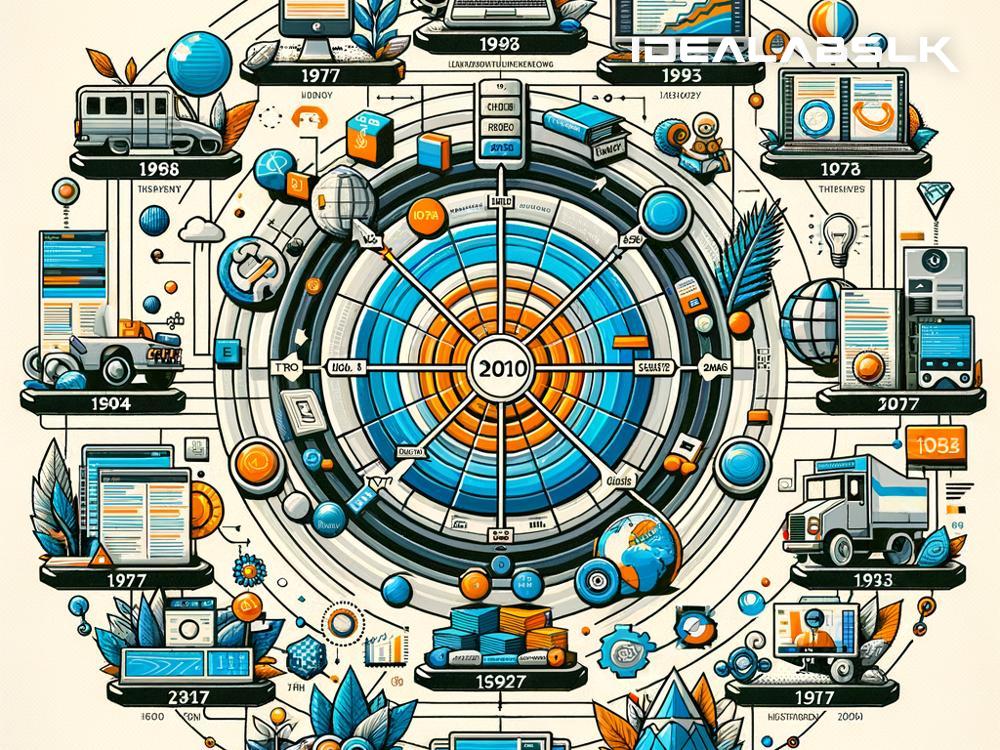The Evolution of Web Design: From HTML 1.0 to CSS and Beyond
Once upon a time, the internet was a barren digital landscape, devoid of the vibrant, interactive pages we're familiar with today. Web design, much like a caterpillar's journey to becoming a butterfly, has undergone a remarkable evolution from its simplest form to the complex and beautiful displays we see on our screens now. Let's dive into this transformation, from the original HTML 1.0 to the advent of CSS and the future beyond.
In the Beginning: HTML 1.0
In 1991, the digital world witnessed the birth of HTML (HyperText Markup Language) 1.0, crafted by Tim Berners-Lee. It was the foundation that allowed the construction of basic web pages. Think of it as the first set of LEGO bricks—limited in variety but essential for building the structure. HTML 1.0 focused on the structure of information — like titles, paragraphs, and lists — rather than how the pages should look. Web design was purely informative, almost exclusively text, and lacked the visual appeal we're accustomed to today.
Enter the Images: A Step Towards Interactivity
HTML 2.0 soon followed, introducing the ability to add images to web pages. This was a giant leap forward because, as the saying goes, "A picture is worth a thousand words." Images made websites more engaging and marked the beginning of web design considerations for visual impact, beyond just presenting information.
Tables and Frames: Structuring Chaos
The mid-1990s saw HTML evolving to include tables and frames, which allowed for more complex layouts. Web designers used tables, originally intended for tabular data, to create multi-column layouts. Frames let them split browser windows into different sections, each loading a separate HTML document. Though this offered more control over design, it also led to cluttered, often chaotic web pages. It was a period of experimentation and learning, pushing the boundaries of what could be achieved within the confines of HTML.
Cascading Style Sheets (CSS): Revolutionizing Web Design
In 1996, CSS (Cascading Style Sheets) was introduced, and it was a game-changer for web design. CSS separated content (HTML) from presentation, allowing web designers to control the layout, color, fonts, and overall look of their sites without altering the underlying HTML. This separation made websites not only easier to design and update but also more accessible and faster to load.
CSS enabled the creation of more consistent and visually appealing sites. It also introduced responsive design principles, making web pages viewable on devices of varying screen sizes, from desktop monitors to mobile phones. This adaptability to the user's device was a significant advancement in making the internet more accessible to everyone, everywhere.
The Rise of Web Standards and Accessibility
The evolution of web standards has been closely tied to the development of HTML and CSS. Organizations like the World Wide Web Consortium (W3C) have worked to ensure these languages follow international standards, promoting accessibility and a uniform web experience across different browsers and devices.
Accessibility became a primary focus, ensuring web content is available to all users, including those with disabilities. This includes considerations for screen reader compatibility, keyboard navigation, and ARIA (Accessible Rich Internet Applications) landmarks, among others.
Beyond HTML and CSS: JavaScript and Modern Frameworks
While HTML and CSS form the skeleton and skin of the web, JavaScript represents the muscles, allowing for interactive and dynamic web pages. JavaScript's introduction allowed for actions on web pages, like responding to user inputs without needing to reload the page.
Modern web design also leverages frameworks and libraries—collections of pre-written code that simplify complex tasks. Frameworks like React, Angular, and Vue.js, built on JavaScript, empower designers and developers to create sophisticated, dynamic websites and applications with relative ease.
Looking into the Future
The future of web design is poised for even more innovation, with advancements like artificial intelligence, virtual reality, and augmented reality beginning to play roles in how we interact with web content. As technology evolves, the possibilities for creative and functional web design expand, promising an exciting horizon for designers and users alike.
In Conclusion
The journey from HTML 1.0 to CSS and the rich interactivity offered by JavaScript and other technologies is a testament to human ingenuity and the relentless pursuit of better, more beautiful, and more accessible ways to share information. As we look to the future, the principles that guided the evolution of web design—usability, accessibility, and aesthetic appeal—will continue to shape how we experience the digital world, in ways we can only begin to imagine.

